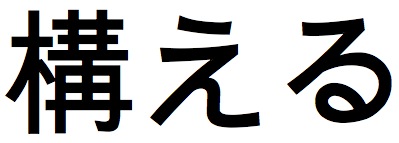仁亭 from Daniel Morales on Vimeo.
00:28 George Miller’s “King of the Road.” You might recognize George Miller as the voice for the rooster from Disney’s animated version of Robin Hood. He also wrote and sang some of the songs from the movie, notably “Oo de lally.” What’s that you say? You want to hear the Swedish version? Well, YouTube delivers.
00:36 The Yaesu side of Tokyo Station. I wonder if this part of the station will get renovated. I really like the look of north Yaesu, but that’s mostly because of the big Daimaru over there.
00:44 That big glass building on the right is the International Forum. It’s a great building, and it’s free, so I always try to take friends to see it. I never knew about it until my college roommate Dave came to visit Japan with his skinny little hipster guidebook. Thank you, skinny little hipster guidebook.
00:47 Ah, the Sakura Bus. The best way to get up to Fukushima. If you’re taking it to Aizu, it’s often just as fast as taking the train because you have to change trains and wait in Koriyama. Much cheaper than the train, too.
00:59 Big jump to Koriyama. I wanted to film more, but when I got on the bus, I realized my camcorder battery was really low.
Love this little sign. It says “Right: Jintei. Left: Edo, 60 里” I can’t really tell if that kanji is 里 or not, but it makes sense. 里 is an old Japanese unit of measurement that is equivalent to 3927 meters. 60 would be approximately 234 km, which seems right.
01:04 This is Jintei. I wrote a lot about it in the original post, so I won’t say too much here other than note again that it’s a fantastic restaurant run by a really nice guy.
01:09 Seeing the video I took of this sign was the first time I realized that Jintei serves “yakikatsu” and not “tonkatsu.” I’m not sure what the difference is, although from the video it does look like the katsu get a bit of pan-searing on one or both sides.
01:22 Ha, Jintei noob. Everybody knows you just have to wait.
01:28 Doh! This lady didn’t unfold the fan completely, so the “Jintei Special” on the far right is still hidden.
01:54 Mmmm. Jintei salad. The salad is so critical to the Jintei experience. Not only does it have more foliage than your standard tonkatsu salad, it has two dressings that need to be mixed in appropriate portions. A creamy one and a more vinegary one. They cut through the greasiness of the katsu perfectly and really balance the whole meal (along with the karashi and lemon, of course).
02:11 Does look like some searing, eh? Perhaps yakikatsu aren’t deep fried at all.
02:17 The moment of truth. Yes, there is cheese and ham and a leaf of basil in there. I’m so hungry watching this.
02:25 I can’t believe I ate the whole thing. I discovered through experience that I was always better off leaving the last three to four cuts and getting them to go. I also can’t believe the master let me sit at the table even after I told him the counter (space for two) was fine. I scarfed everything down because I felt so bad for the people waiting outside.


